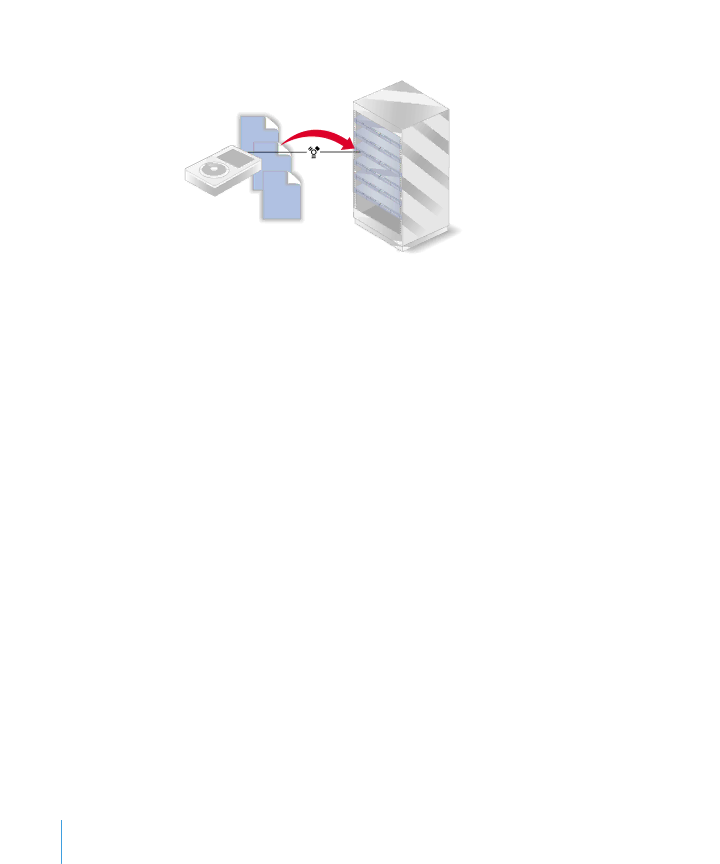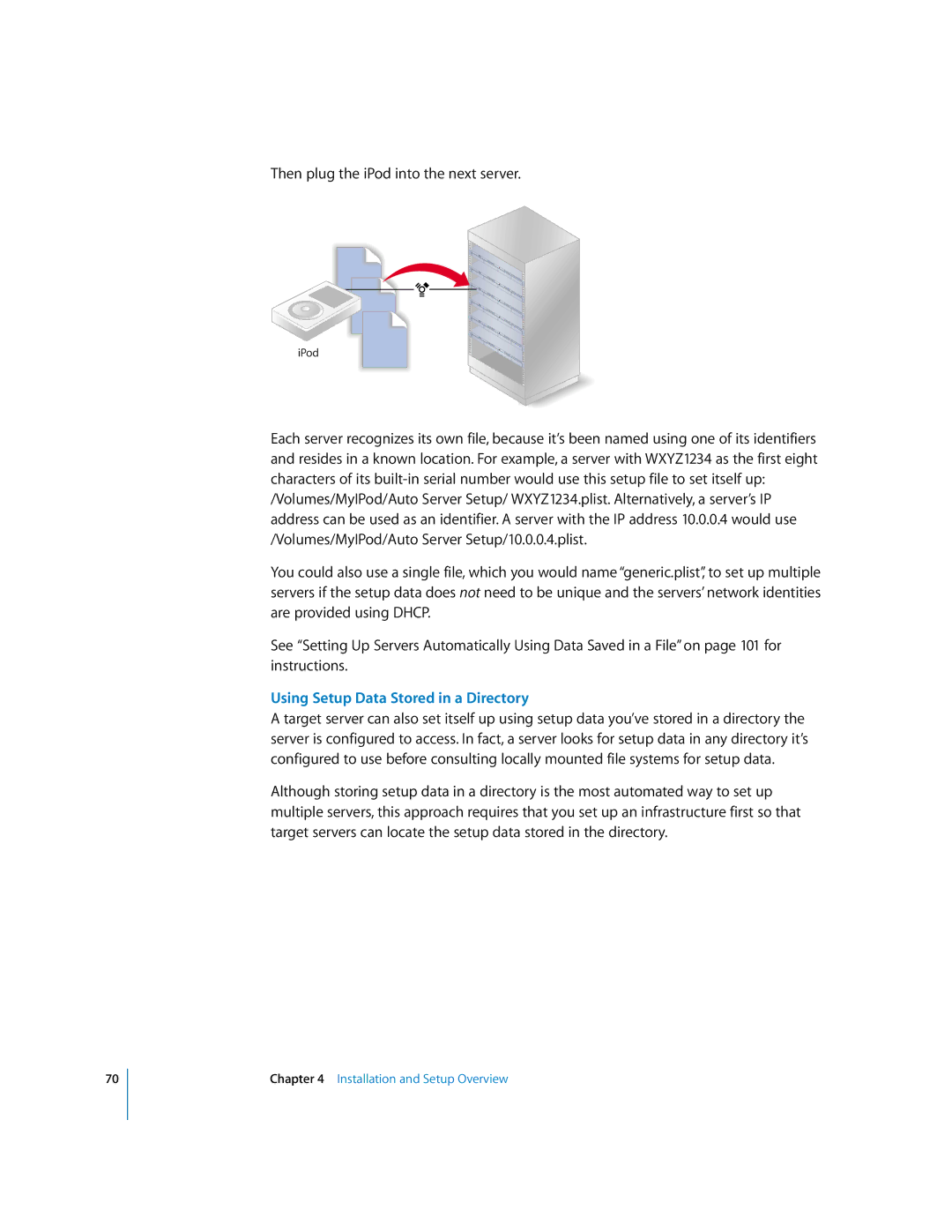
70
Then plug the iPod into the next server.
iPod
Each server recognizes its own file, because it’s been named using one of its identifiers and resides in a known location. For example, a server with WXYZ1234 as the first eight characters of its
/Volumes/MyIPod/Auto Server Setup/ WXYZ1234.plist. Alternatively, a server’s IP address can be used as an identifier. A server with the IP address 10.0.0.4 would use /Volumes/MyIPod/Auto Server Setup/10.0.0.4.plist.
You could also use a single file, which you would name “generic.plist”, to set up multiple servers if the setup data does not need to be unique and the servers’ network identities are provided using DHCP.
See “Setting Up Servers Automatically Using Data Saved in a File” on page 101 for instructions.
Using Setup Data Stored in a Directory
A target server can also set itself up using setup data you’ve stored in a directory the server is configured to access. In fact, a server looks for setup data in any directory it’s configured to use before consulting locally mounted file systems for setup data.
Although storing setup data in a directory is the most automated way to set up multiple servers, this approach requires that you set up an infrastructure first so that target servers can locate the setup data stored in the directory.
Chapter 4 Installation and Setup Overview
